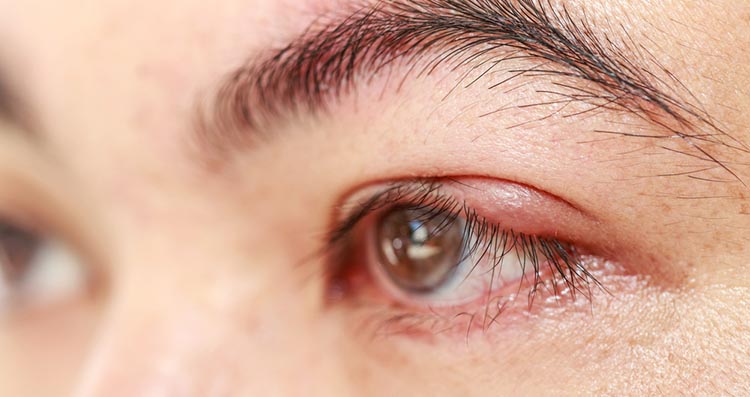The most common causes of eye styes are staphylococcal bacteria, or a blockage of the oil glands at the base of the eyelashes. However, they have been linked to diabetes and weaknesses of the immune system. Staphylococcal bacteria are often found in the nose, and wiping your nose before touching your eyes can easily transmit the bacteria – this is usually why children tend to develop styes more often than adults. Most kids tend to be a little less careful about keeping their hands clean and away from their eyes.

To prevent styes from forming, try to avoid touching or rubbing your eyes – especially if you haven’t washed your hands first. This can irritate your eyes and let in the bacteria that cause styes. Women should replace their eye makeup (particularly mascara and eyeliner) at least every six months. Never share eye makeup, and always remove it before going to bed.
When a stye first develops, you may experience any of the following symptoms:
- Discomfort when blinking
- Swollen and tender eyelid (upper or lower)
- Tearing of the eye
- A scratchy sensation when blinking – as if there is a foreign body in the eye
- Blurred vision
- Sensitivity to light
- A bruised sensation
If you have a stye, it is extremely important to keep your eyes and eyelids clean and free of makeup while it clears up. Also, don’t wear contact lenses until a stye has healed. Under no circumstances should you squeeze a stye … The eyelid is the thinnest skin on the body and is easily damaged. The best treatment is to apply a hot compress 3-6 times per day. This will help open up a blocked pore so that it can drain and begin to heal. Antibiotic eye drops or ointments may also be prescribed to help clear the infection. Rarely is surgery required to remove a stye.
Whether you have a stye, or need to have your eyes checked for some other reason, we’re always happy to help. Please contact our office today to schedule an appointment.